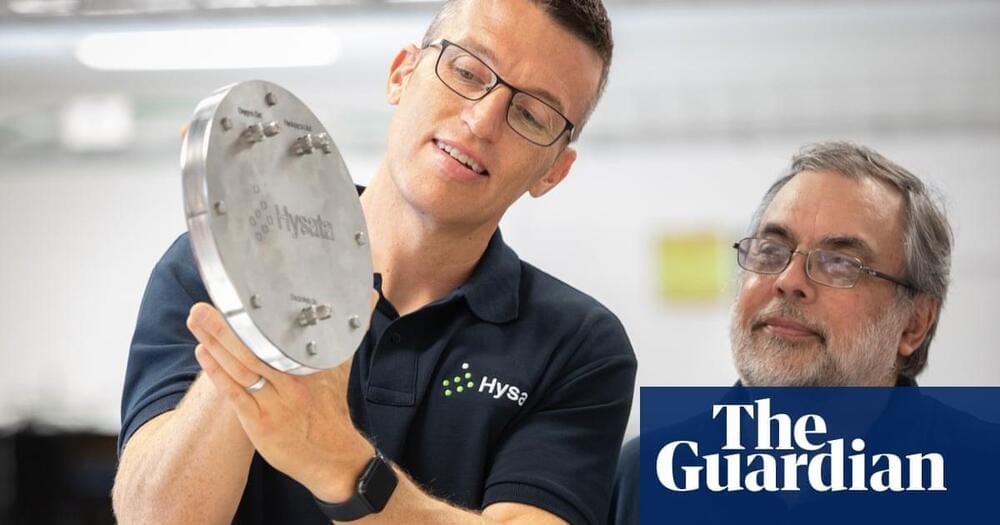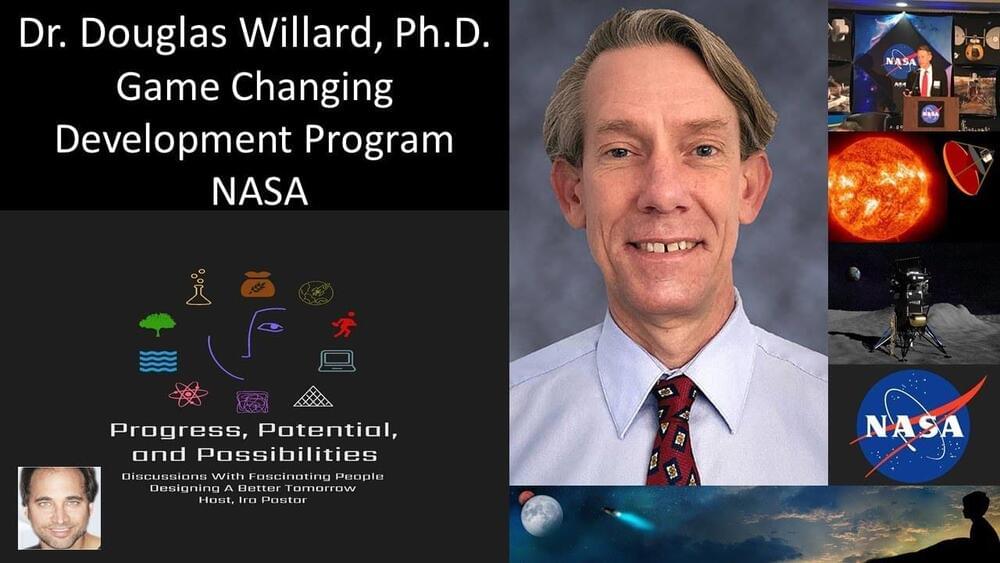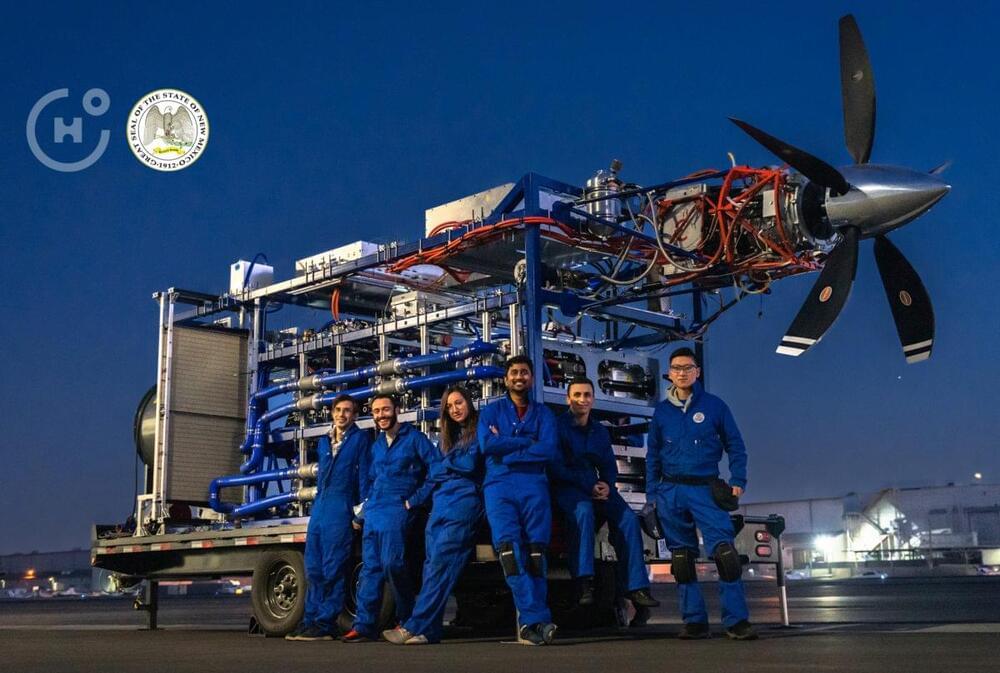“The investigation into the recent cyber event on the KA-SAT European network continues in partnership with law enforcement, government partners and Viasat’s third-party cybersecurity firm,” Viasat said in a statement March 11. “We currently believe this was a deliberate, isolated and external cyber event.”
Category: government – Page 65
We’ve showcased plenty of EV conversions on the channel before, but up until now they’ve mostly been high-end, beautifully refurbished classics. In this episode, Jack heads to France to investigate the entry-level of EV conversion. For €5,000 after government subsidies, a company by the name of Transition One claims it can turn your old banger into a no fuss, no-emissions electric car. Is this the answer to overpriced new cars? Could this be the key to accelerating EV uptake? Check out the episode to find out.
00:00 Welcome to a crusty Fiat!
1:54 Welcome to Transition One.
3:35 One very charismatic founder.
5:30 How does it work?
7:37 The gearbox lives!
8:50 How much??
12:12 Range and specs.
13:39 Who fits it?
14:43 How many orders?
15:35 When can I buy one?
17:12 Final thoughts.
Fully Charged LIVE is BACK! Get your tickets now:
Farnborough — 29th & 30th April, 1st May 2022: https://fullycharged.live/
Amsterdam — 20th, 21st & 22nd May 2022: https://fullycharged.live/eu/
San Diego — 10th & 11th September 2022: https://fullycharged.live/us/
Become a Patreon: https://www.patreon.com/fullychargedshow.
The achievement, published in the peer-reviewed Nature Communication journal today, could see the Morrison government’s so-called hydrogen stretch goal of $2 a kilogram to make the fuel competitive reached as soon as 2025, the Hysata chief executive, Paul Barrett, said.
“We’ve gone from 75% [efficiency] to 95% – it’s really a giant leap for the electrolysis industry,” Barrett said.
Renewable energy from sources such as wind and solar is making big inroads into the power sector, supplying more than a third of eastern Australia’s electricity in the final three months of 2021. However, decarbonising industry and some transport, such as trucking, is likely to be tougher unless fuels such as hydrogen become much cheaper.
Advancing Space Tech For Future Missions — Dr. Douglas Willard, Ph.D., Game Changing Development Program, Space Technology Mission Directorate, NASA
Dr. Douglas E. Willard, PhD, (https://www.nasa.gov/directorates/spacetech/game_changing_de…g-willard/) is Program Element Manager, Game Changing Development Program, Space Technology Mission Directorate, at the U.S. National Aeronautics and Space Administration (NASA).
The Game Changing Development (GCD) Program advances space technologies that may lead to entirely new approaches for the Agency’s future space missions and provide solutions to significant national needs. GCD collaborates with research and development teams to progress the most promising ideas through analytical modeling, ground-based testing and spaceflight demonstration of payloads and experiments and their efforts are focused on the mid Technology Readiness Level (TRL) range 0, generally taking technologies from initial lab concepts to a complete engineering development prototype. The Program employs a balanced approach of guided technology development efforts and competitively selected efforts from across academia, industry, NASA, and other government agencies.
The Russian government is now facing a digital storage crisis as Western cloud services have pulled their services from the country.
Western cloud storage providers have pulled out of Russia following heavy Western sanctions designed to cripple the Russian economy. According to reports, the Russian government is looking at several different ways to solve the problem of finding hosts for Russia’s data, and some of those solutions include leasing all available data storage across Russia or seizing all data storage from Russian businesses that have left the country.
Abundant fuel cell raw materials and renewables potential could add up to a green hydrogen economy in the Philippines, according to Jose Mari Angelo Abeleda Jr and Richard Espiritu, two professors at the University of the Philippines Diliman. In a paper published in this month’s Energy Policy, they explained the country is a latecomer to the sector and should develop basic and applied knowledge for training and research. The country should also establish stronger links between industry and academia, the report’s authors suggested. “The establishment of the Philippine Energy Research and Policy Institute (Perpi) is a move towards the right direction as it will be instrumental in crafting policies and pushing for activities that will usher for more private-academ[ic] partnerships for the development of fuel cell technology in the Philippines,” the scholars wrote. “However, through enabling legislation, a separate and dedicated Hydrogen Research and Development Center (HRDC) will be pivotal in ensuring that sufficient government and private funding are provided.” The authors reported progress in the production of fuel cell membranes but few developments towards large scale production, transport, and storage facilities. “The consolidation of existing renewable energy sources for hydrogen production can also be explored in order to ensure reliable and sustainable hydrogen fuel supply,” they wrote. “This is because the country will gain more benefit if it focuses more on the application of fuel cell technology on rural electrification via renewa[ble] energy-based distributed power generation, rather than on transportation such as fuel cell vehicles.”
Paris-based energy engineering company Technip Energies and Indian energy business Greenko ZeroC Private have signed a memorandum of understanding (MOU) to explore green hydrogen project development opportunities in the refining, petrochemicals, fertilizer, chemical, and power plant sectors in India. “The MOU aims to facilitate active engagement between the teams of Technip Energies in India and Greenko to step up collaborative opportunities on a build-own-operate (BOO) model – in which Greenko will be the BOO operator and owner of the asset and Technip Energies will support with engineering services, integration and EP/EPC [engineering and procurement/engineering, procurement and constructrion] – for pilot and commercial scale green hydrogen and related projects in India in order to offer economically feasible technology solutions to clients,” the French company wrote today.
Last summer, at a time when the pandemic had strained many people’s finances, inflation was rising and unemployment was still high, the sight of the richest man in the world joyriding in space hit a nerve. On July 20 Amazon founder Jeff Bezos rode to the edge of space onboard a rocket built by his company Blue Origin. A few weeks earlier ProPublica had revealed that he did not pay any income taxes for two years, and in other years he paid a tax rate of just 0.98 percent. To many watching, it rang hollow when Bezos thanked Amazon’s workers, whose low-paid labor had enriched him enough to start his own rocket company, even though Amazon had quashed workers’ efforts to unionize several months before. The fact that another billionaire, Richard Branson, had also launched himself onboard his own company’s rocket just a week earlier did not help.
COVID changed many people’s willingness to shrug off the excesses of the rich. The pandemic drew an impossible-to-ignore distinction between those who can literally escape our world and the rest of us stuck on the ground confronting the ills of Earth: racism, climate change, global diseases. Even several members of Congress expressed their disapproval of Bezos. “Space travel isn’t a tax-free holiday for the wealthy,” said Representative Earl Blumenauer of Oregon. Bezos and Branson putting the spotlight on themselves as passengers served to downplay the work that hundreds of scientists and engineers at Blue Origin and Virgin Galactic had put into designing, building and testing their spacecraft. It also masked the reality that advances in private spaceflight really could eventually pay off in greater access to space for all and more opportunities for scientific research that could benefit everyone. All their flights did was give the impression that space—historically seen as a brave pursuit for the good of all humankind—has just become another playground for the 0.0000001 percent.
AS ASTRONOMER Royal, you have to assume Martin Rees isn’t in it for the money: £100 a year is the reward for advising the UK monarch on all matters astronomical.
It is just one of many hats Rees has worn, though – including president of both the Royal Astronomical Society and the Royal Society and, since 2005, as an appointed member of the UK’s House of Lords. His work as a government adviser and public face of science has come on the back of an equally distinguished career in cosmology stretching back more than half a century, encompassing seminal research on the nature of the big bang and black holes, extreme phenomena throughout the cosmos, the search for life elsewhere in the universe and, latterly, humanity’s own fate within it.
Tokamak Energy, based near Oxford, UK, has demonstrated a world-first with its privately-funded ST40 spherical tokamak. The reactor achieved a plasma temperature of 100 million degrees Celsius, the threshold required for commercial fusion energy.
At nearly seven times hotter than the centre of the Sun, this is by far the highest temperature ever generated within a spherical tokamak and also by any privately-funded tokamak. The ST40 had previously achieved a temperature of 15 million degrees in June 2018. While several government laboratories have reported plasma temperatures above 100 million degrees in conventional tokamaks, this milestone has been achieved in just five years, for a cost of less than £50m ($70m) and in a much more compact fusion device. This provides further proof that spherical tokamaks are a viable route to the delivery of clean, secure, low cost, scalable fusion energy.
If nuclear fusion reaction – the process that powers the Sun and other stars – could be used on a consistent basis on Earth, it would be a source of virtually unlimited clean energy. But there are still a lot of obstacles to overcome.
U.K.-based nuclear fusion firm Tokamak Energy has demonstrated a world-first with its privately-funded ST40 spherical tokamak, achieving a plasma temperature of 100 million degrees Celsius. This threshold is necessary for the future deployment of commercially successful fusion power. According to the company, this is by far the highest temperature ever achieved in a spherical tokamak and by any privately funded tokamak.
Several government laboratories have reported plasma temperatures above 100 million degrees in conventional tokamaks, including South Korea’s KSTAR reactor and China’s “artificial sun” EAST tokamak reactor. However, Tokamak Energy highlights that its milestone has been achieved in just five years, or a cost of less than £50m ($70m), in a much more compact fusion device. This achievement further substantiates spherical tokamaks as the optimal route to the delivery of clean, secure, low-cost, scalable, and globally deployable commercial fusion energy.









